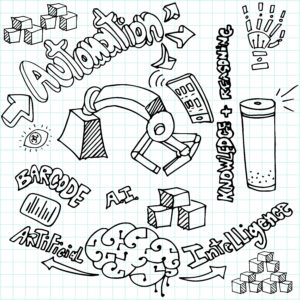Coming Full Circle: Customer Service in an Automated World
The cycle of personalize, automate, personalize, automate looks to be coming full circle again as brands and businesses try to bring a new degree of automation to customer service for the modern consumer. It seems like just yesterday marketers were stressing more authentic human interaction between brand and customer, but IBM predicts that 85% of all customer interactions will be handled without a human agent by 2020. How does that make you feel, human?
Subtle and not-so-subtle customer service automation evolutions already serve to enhance the customer experience, and these automations are a bit more advanced than robotic phone directories or animated paperclips.
A Century of Customer Services Reveals the Cycle
The “good old days” of a smile and a helping hand still serve as the early 20th century customer service stereotype. Go ahead, conjure up an image of an early gas station in your head and chances are you’ve imagined a handful of attendants wiping windows and pumping gas. Now, replace that with the mental image of a customer service call center from a few decades later—rows of identical desks and the buzz of attendants advising customers over the phone, removed one degree from the face-to-face of the good old days. Call center operators soon realized recorded messages and automated directories could do most of the simple customer service-related stuff, and a decade later consumers were dealing with hour-long phone calls and wishing for those good old days of human interaction.
Luckily, brands and businesses listened, and in the ‘90s and early ‘00s there was an effort to bring customer service back to a more authentic, personalized space. Marketing campaigns were launched to explicitly state that humans were one the other end of the line, and for a while automation took a back seat to a good old days way of interacting with the customer. Then, the internet took off.
Suddenly, brands could bring their message front-and-center to consumers through a new avenue, and a renewed slew of automated marketing sprung up. The customer was removed from the equation, and an era of quantity over quality saw automated mass marketing campaigns pushed into as many corners of a consumer’s digital life as could be found. Again, customers learned to yearn for the good old days of human interaction, and again some brands listened.
consumers through a new avenue, and a renewed slew of automated marketing sprung up. The customer was removed from the equation, and an era of quantity over quality saw automated mass marketing campaigns pushed into as many corners of a consumer’s digital life as could be found. Again, customers learned to yearn for the good old days of human interaction, and again some brands listened.
The past decade saw another resurgence of the human-to-human customer service initiative, and the rise of social media accountability all but demanded a more human face from businesses both big and small. Brands were held more responsible for their customer service faux pas, and today consumers expect a degree of personalization from their customer service interactions. Will the sentiment last? Only time will tell, because a new wave of customer service automation has already started rolling in.
Customer Service Automation in the 21st Century
Gas service attendants may still pump gas in some states around the country, and you’re bound to encounter an automated phone directory here and there, but it’s safe to say the customer experience has evolved. The digital marketplace has drastically changed the way both brands and consumers view purchasing goods and services, but the challenge of quality customer service still remains. The solution? Artificially intelligent robots. Your phone isn’t going to transform and enslave humanity overnight, but artificially intelligent/enhanced automated customer service services already exist.
- Zero contact resolutions: Phone and online automation is smarter, faster, and more intuitive than it’s ever been, and many companies let customers handle routine processes and easy-to-resolve customer service issues without speaking to or interacting with another person. Customers actually prefer features like chatbots in some customer service scenarios, and most automated features still give users the option to transfer to an actual person if they’d like.
- Voice biometrics: Automated systems are getting better at not only recognizing what we say but how we say it and why. Take Apple’s Siri or Amazon’s Alexa for example. You’re essentially talking to an early-stage artificial intelligence that can “understand” your commands and questions within certain parameters.
- Automatic/proximity messaging: Automated text and social media messaging at events, after specific actions are taken online, or to confirm customer satisfaction make it easy for brands to connect with consumers on the go. Proximity messaging uses GPS-based technology to push out customer service messages to people in the area, providing valuable information like directions, product instructions, or real-time alerts.
Perfect Customer Service Is Still Elusive
There’s an old adage that says the only constant is change, and we’ve reached a time in customer service, consumer interaction, and basic day-to-day communication in which logistical change happens almost daily. Fortunately, humans are predictable, and so too is the customer service mentality. Consumers want great content and customer service without the hassle. Brands want plenty of great customers without the pushback. The middle ground, where perfect customer service can be found, is still eluding most business somewhere between automated service and authentic human interaction.
Andrew is a word wizard/content creator extraordinaire who considers himself a bit of a dabbler. From writing to reading, exercise, outdoor exploration, art, music, photography, and even a little existentialism, it’s all color on the creative palette.

